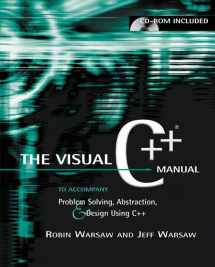
Problem Solving, Abstraction, & Design Using C++: Visual C++ Edition
Book details
Summary
Description
This package includes one of the leading textbooks for the CS1 in C++ course, Problem Solving, Abstraction, and Design in C++, 3e, and a brand new manual, Programming in Visual C++. This new supplement contains nearly 40 pages describing how to install and set-up Microsoft's C++ compiler, and also includes a CD-ROM containing a copy of Visual C++ 6.0. The book Problem Solving, Abstraction, and Design Using C++ presents, and then reinforces, the basic principles of software engineering and object-oriented programming while introducing the C++ programming language. One of the hallmarks of this book is the focus on program design; Professors Frank Friedman and Elliot Koffman present a Software Development Method in Chapter 1 that is revisited in the Case Studies throughout the book. This book carefully presents object-oriented programming by balancing it with procedural programming so the reader does not overlook the fundamentals of algorithm organization and design. Object-oriented concepts are presented via an overview in Chapter 1 and then demonstrated with the use of the standard string and iostream classes and a user-defined money class throughout the early chapters. Chapter 10 shows how to write your own classes and chapter 11 shows how to write template classes. The presentation of classes is flexible and writing classes can be covered earlier if desired.


We would LOVE it if you could help us and other readers by reviewing the book
Book review



